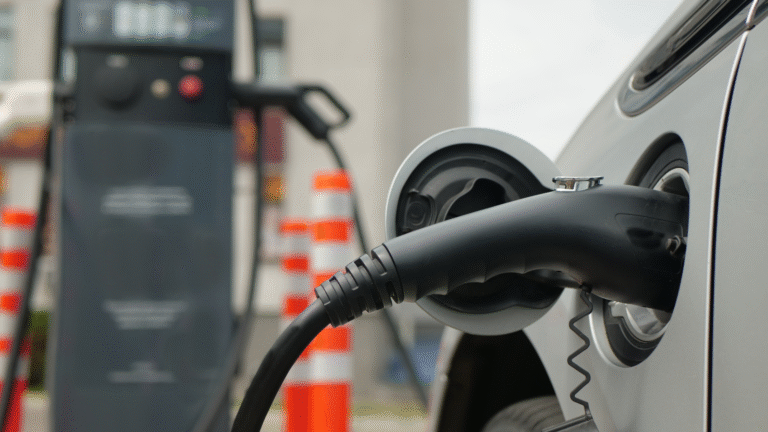As electric vehicles (EVs) continue to accelerate onto Australian roads, the infrastructure supporting them—especially public charging stations—is expanding rapidly. But with greater connectivity comes greater risk. Just like any smart technology, EV chargers can be exposed to cyber threats.
So, how secure are public EV chargers? Can hackers really access your car, data, or worse—Australia’s power grid—through a charging point?
Let’s take a closer look at EV charging security and what drivers need to know.
Table of Contents
- How Public EV Chargers Work
- Why Security Matters in EV Charging
- Potential Vulnerabilities in Public Chargers
- What Hackers Could Target (and What They Can’t)
- Measures Charging Networks Are Taking
- What Drivers Can Do to Stay Safe
- Conclusion
1. How Public EV Chargers Work
Modern public EV chargers are more than just power outlets. They’re often part of a digital network, complete with software that communicates with your vehicle, billing system, and the electricity provider.
Many use:
- Embedded operating systems
- RFID cards or mobile apps for authentication
- Remote maintenance capabilities
- Cloud-based user accounts
That means every charging session involves some level of data transfer—making cybersecurity a critical piece of the puzzle.
2. Why Security Matters in EV Charging
As with any connected system, weak security could open doors to:
- Personal data leaks (names, billing info)
- Charging session manipulation
- Network downtime due to malware or ransomware
- Potential access to backend systems managing the energy grid
While the idea of someone hacking your car through a charger might seem like sci-fi, cybersecurity experts are treating it seriously—especially as more vehicles and chargers become interconnected.
3. Potential Vulnerabilities in Public Chargers
Here are some of the key ways a public EV charger could be vulnerable:
🕳️ Outdated Software
Some chargers may run on older, unpatched operating systems—an easy target for cybercriminals.
📡 Open Networks
Wi-Fi or cellular connections without proper encryption could allow interception or spoofing.
🧾 User Authentication Gaps
Weak verification via RFID cards or apps may be exploitable by cloned credentials.
🔌 Physical Ports
Some chargers include USB or Ethernet ports for diagnostics, which—if left unsecured—could offer direct access.
4. What Hackers Could Target (and What They Can’t)
❌ What they can’t do easily:
- Hack your EV battery or motor directly
- Remotely control your car through a charger
- Cause physical harm to your vehicle during charging
✅ What they might try to do:
- Access your billing or personal account data
- Disrupt the charger network with malware
- Launch denial-of-service (DoS) attacks to shut down stations
- Interfere with energy load-balancing systems tied to smart grids
While attacks are rare, real-world tests and research have shown these types of exploits are possible under the wrong conditions.
5. Measures Charging Networks Are Taking
Thankfully, Australia’s leading EV charging providers are well aware of the risks and are taking the following precautions:
- Encrypted communication between EVs and chargers
- Secure over-the-air software updates
- Firewalls and intrusion detection systems
- Regular security audits and penetration testing
- Access controls for technicians and support staff
Many stations also require multifactor authentication and use secure payment gateways to protect customer data.
6. What Drivers Can Do to Stay Safe
While networks carry most of the responsibility, EV drivers can also play a role:
🔒 Use trusted apps only – stick to official apps from Chargefox, Evie, Tesla, etc.
📱 Avoid public Wi-Fi when starting charging sessions via mobile.
🛑 Don’t plug into chargers that look physically damaged or tampered with.
🔄 Keep your EV’s software up to date – security patches often arrive via OTA updates.
🧾 Monitor your charging transactions for any unusual activity.
By taking a few precautions, you can ensure your charging experience is not only efficient—but secure.
7. Conclusion
EV charging is evolving fast—and while most public chargers in Australia are secure today, staying ahead of cyber threats is crucial. As infrastructure grows smarter, so must the safety measures around it. With ongoing investment in cybersecurity and some smart habits from drivers, EV charging can remain a smooth and safe part of the electric driving experience.
Are public EV chargers in Australia vulnerable to hacks? Learn the risks, how networks protect drivers, and what you can do to stay secure when charging your electric vehicle.
